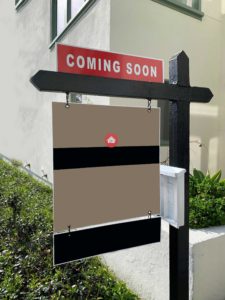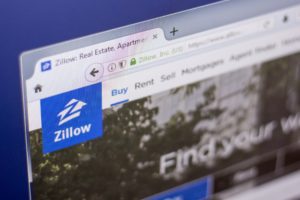Podcast: Play in new window | Download
Summary:
Jeremy Tallman is the President and Managing Broker for T&H Realty Services in Indianapolis. He is talking with us on The Property Management Show today about pre-marketing and the success he’s had in building waitlists for properties that are soon to be available in his portfolio of rental homes.
While this isn’t a new concept in the property management and real estate industries, it has come to mean different things to different people.
We’re looking at how it impacts the industry and what it might mean for you in limiting vacancy rates and marketing your rental homes more efficiently.
Key Takeaways:
- Pre-marketing is the process of marketing a rental home and generating interest before it is officially available for showings.
- Property managers should take advantage of software that allows them to build waitlists with interested tenants
- Pre-marketing & building waitlists can save property managers time and money, but only if you have the proper internal processes in place to support your pre-marketing system.
Catch our full Property Management Marketing series:
Property Management Marketing | Part 1 | The Rise of Zumper & Facebook Marketplace
Property Management Marketing | Part 3 | How Owner Marketing Has Changed
Pre-Marketing in Property Management: The Baseline
 Jeremy does not show any homes while tenants are still living there. This was something he did before embracing the pre-marketing platform he currently uses, but now all showings commence after a property is turned and made ready.
Jeremy does not show any homes while tenants are still living there. This was something he did before embracing the pre-marketing platform he currently uses, but now all showings commence after a property is turned and made ready.
The right systems must be in place for effective pre-marketing. Technology plays a big role.
What pre-marketing means to Jeremy is giving the property the best chance to be leased quickly as soon as showings can occur.
Rently is a valuable tool in this process. Like other showing services and lockbox resources, it provides a waitlist that helps with pre-marketing.
Previously, if a home was coming onto the rental market sometime in the future, you could simply say “Coming Soon.” A lot of property managers found that difficult to manage, however. People would call about availability and information. That’s hard to administer and scale. Keeping track of all the follow up can be overwhelming.
With Rently, Jeremy and his team put homes in waitlist mode. This is the pre-marketing and pre-leasing sweet spot. People can register for the waitlist and they’re immediately informed when it’s live and ready to be seen.
Staying on top of expectations is a big part of this. If you say your property will be available on October 15, people on that waitlist will expect it to be ready for viewings on October 15. Otherwise, you can create a lot of frustration.
The software allows property managers and marketing professionals to see who is on the waitlist. They know how many people are interested and they know when those prospective tenants joined the waitlist. The data is valuable in setting a final rental price, collecting applications, and scheduling showings.
What Does the Waitlist Show Renters?
 On the waitlist, prospective renters have access to the same pictures and descriptions that they’d see on any normal listing.
On the waitlist, prospective renters have access to the same pictures and descriptions that they’d see on any normal listing.
With brand new properties that have never been leased and are occupied by an inherited tenant, Jeremy’s team will have to get whatever pictures they can, at least of the property’s exterior. If the home has been marketed in the past, those older photos will be used so people can get a general sense of what it looks like inside.
When the listing goes live, there’s an accurate portrayal of the home. New photos can be taken with any updates that have been made during the turnover. As most property managers know, turnovers can take two days or two months, depending on the work that’s done. Sometimes, the floors have to be replaced and the walls re-painted. Other times, it’s a simple cleaning and lock change.
Internal Property Management Processes Required for Pre-Marketing
It’s not just having access to great technology – it’s how you use it.
Internally, you need processes in place to ensure the availability date is accurate.
Technology is often slow moving in property management, and a lot of different people are trying a lot of different things. Some of the new technology is exciting and some of it is cumbersome. Rently and products like it are some of the biggest game changers the industry has seen in years, Jeremy believes.
The Challenges Pre-Marketing Can Solve
 Before adopting this strategy of pre-marketing, sales managers at Jeremy’s company were responsible for visiting rental homes as soon as a tenant gave notice that they were leaving. They’d take a look around and determine whether the property could be shown in its current condition.
Before adopting this strategy of pre-marketing, sales managers at Jeremy’s company were responsible for visiting rental homes as soon as a tenant gave notice that they were leaving. They’d take a look around and determine whether the property could be shown in its current condition.
Showing occupied homes was difficult due to all the scheduling that had to be done around the existing tenant. Today, it would be impossible with COVID. Even before the pandemic, it was a frustrating process for future tenants, current tenants, and property managers. No one wants to see other people’s furniture in the home they’re hoping to rent.
Expectations were also hard to meet. Prospective tenants didn’t know what Jeremy’s team was planning to do during the turnover. They’d ask about new paint and clean carpet and whether the blinds would be replaced. Promising those things required that the management company delivered.
The New Challenges Pre-Marketing Creates
 With the pre-marketing strategy, expectations are clear and easy to meet. When a tenant goes in to see the property, they do it on their own schedule and they know that this is the home they’re going to get. The end result is minimal vacancy times, even while waiting until the property is empty.
With the pre-marketing strategy, expectations are clear and easy to meet. When a tenant goes in to see the property, they do it on their own schedule and they know that this is the home they’re going to get. The end result is minimal vacancy times, even while waiting until the property is empty.
The new challenge is making sure the property is available on the date that it has been advertised as available. Jeremy is careful to include a couple of weeks of lead time to ensure he doesn’t list an availability date that’s too soon. The two-week window has worked well. Property managers are responsible for the turnovers, so they’re in place, at the property, coordinating with owners and contractors.
Property management is a push and pull industry. Every day of vacancy costs money and communication has to be tight.
Tighter Systems and Fewer Days on Market
 Days on market are extremely important, and most property managers closely watch that data.
Days on market are extremely important, and most property managers closely watch that data.
It’s difficult to know whether the pre-marketing system and the waitlist has any impact the number of days a home is listed on the market. That’s because the market in central Indiana has changed so dramatically over the last few years. There’s a lot more supply but not a huge difference in demand.
Typically, the rental season in Indianapolis begins in January and ends in July, when schools are preparing to go back. However, COVID has changed that.
There’s no question that Jeremy’s pre-marketing plans have impacted the daily marketing. However, the market is always going to drive how many days a home is on the market. Currently, there’s an average of five days that a home Jeremy is leasing is on the market. He can’t say that’s because of the pre-marketing because everything is so different now.
The real benefit has been to his staff and his ability to meet the needs of prospective tenants. Homes can be shown seven days a week and 12 hours a day now. He’s gone from managing six full-time rental agents to one full-time rental marketing manager. Staffing is leaner and there’s a lot less frustration for his team members.
Syndication and Rental Property Marketing
 Zillow is a hot topic lately, and a lot of property managers who once loved marketing homes through Zillow now hate it because it’s gone from a free platform to one in which property managers have to pay for listings.
Zillow is a hot topic lately, and a lot of property managers who once loved marketing homes through Zillow now hate it because it’s gone from a free platform to one in which property managers have to pay for listings.
Jeremy isn’t a hater.
Zillow and their network of rental sites, he says, has always been the best marketing channel he uses.
Even with the volume Jeremy has in their system and the costs that they’re now incurring, it still makes sense. He wasn’t going to take away the best marketing platform for his owners.
No one is happy that a once-free product is now charging for its services. But, you have to remember they provide an excellent service. Property managers are paying for something they need and benefit from.
Using a paid service requires more strategic marketing.
Jeremy says paying to list on Zillow has required his company to become smarter with how they syndicate. When it costs nothing, it’s easy to market everything everywhere. When you’re paying, you want to be careful with timing. You want to be intentional about when you release your listing for syndication.
With the waitlist he has in place, he’ll go to full syndication with a property when he sees it gaining traction. This is to drive interest before it goes live.
Jeremy knows that a lot of his competitors did not stick with Zillow, and they’re noticing a big difference in traction and interaction. Those property managers will probably come back to the Zillow suite of rental sites. It’s going to be difficult to market a property without them.
Know Your Numbers: Pre-Marketing Takeaways
 Every property management company is different, but if you know your numbers you know whether cutting off Zillow will hurt more than it helps. Knowing your numbers allows you to be flexible when it comes to pre-marketing a property. It allows you to know how many people on a property’s waitlist means you can probably raise the rental price.
Every property management company is different, but if you know your numbers you know whether cutting off Zillow will hurt more than it helps. Knowing your numbers allows you to be flexible when it comes to pre-marketing a property. It allows you to know how many people on a property’s waitlist means you can probably raise the rental price.
You’re helping your owners rent properties faster, and you’re helping your staff work with less stress and more efficiency.
Self-service is what every consumer is looking for today, including renters. No one wants to call on the phone to schedule a showing. We order our food online and we do our shopping online. We should also be able to register for showings and join a waitlist online when we find a property we like.
The pre-marketing concept is an excellent selling point when Jeremy is talking to prospective clients. It’s a differentiator for his company.
With Jeremy’s help, we’ve learned the basics of starting a pre-marketing system. If you’re not already focused on getting your rental properties onto the market at the right time, you might want to study this way of creating waitlists and generating interest.
If you have any questions about this podcast or anything pertaining to property management marketing, contact us at Fourandhalf.
P.S. Be sure to catch our full Property Management Marketing series:
Property Management Marketing Pt. 1: The Rise of Zumper & Facebook Marketplace
Property Management Marketing Pt. 2: Building Waitlists & Pre-Marketing

